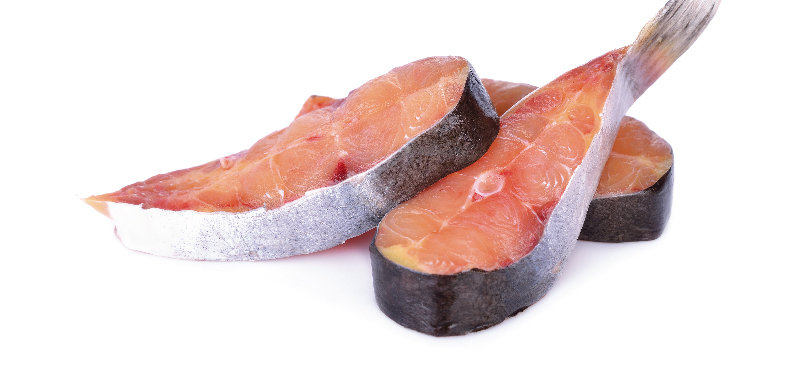This Dr. Axe content is medically reviewed or fact checked to ensure factually accurate information.
With strict editorial sourcing guidelines, we only link to academic research institutions, reputable media sites and, when research is available, medically peer-reviewed studies. Note that the numbers in parentheses (1, 2, etc.) are clickable links to these studies.
The information in our articles is NOT intended to replace a one-on-one relationship with a qualified health care professional and is not intended as medical advice.
This article is based on scientific evidence, written by experts and fact checked by our trained editorial staff. Note that the numbers in parentheses (1, 2, etc.) are clickable links to medically peer-reviewed studies.
Our team includes licensed nutritionists and dietitians, certified health education specialists, as well as certified strength and conditioning specialists, personal trainers and corrective exercise specialists. Our team aims to be not only thorough with its research, but also objective and unbiased.
The information in our articles is NOT intended to replace a one-on-one relationship with a qualified health care professional and is not intended as medical advice.
Are You Eating Swai Fish? 4 Reasons to Stop
February 24, 2023

Consuming certain types of wild-caught fish can be extremely beneficial to your health. Certain seafood picks serve as muscle-building protein foods, and some even provide ample doses of healthy fats like omega-3s. But fish often come with a hefty price tag, which is why consumers tend to go for more affordable options like swai fish instead.
Many consumers, including food purveyors, gravitate to swai fish due to its lower cost, but there are major problems with this fish that you need to know about. Swai fish costs only about $2 per pound, but it’s much costlier when you consider what it could be doing to your health.
Plus, would you believe that often when you pay top dollar for catfish, grouper, flounder and sole, you are actually eating factory-farmed swai?
After you read about the many farming and health issues surrounding swai, you may be more careful about what types of fish you choose to consume in the future.
What Is Swai Fish?
Swai fish is a type of white fish with a mild flavor and flaky texture. It’s a freshwater fish that’s native to Vietnamese rivers and a type of catfish. It’s also called Vietnamese catfish, basa fish and iridescent shark, but it’s neither a basa nor a type of shark.
The abundance of names come from an identity crisis swai fish had in the early 2000s, when it still was sold in the U.S. under the name of “catfish.”
In 2003, Congress passed a law stating that only American catfish could be labeled as such, prompting a variety of names to flood the market, though today, the Vietnamese fish industry seems to have settled on swai.
You won’t find the fish in in Alabama, Louisiana or Mississippi, though. In these states, where catfish is a big industry, it’s illegal to sell swai.
Nutrition Facts
One four-ounce fillet of swai provides about:
- 80 calories
- 19 grams protein
- 0.5 grams fat
- 30.2 milligrams sodium (varies)
- 50.4 milligrams cholesterol
According to research conducted at Purdue University, swai (or pangasius) contains 17 milligrams of EPA plus DHA for every 100 grams of fish.
Of course, the ingredients you use to cook and coat swai fillets change the nutrition content, typically adding more fats, carbs and sodium.
Is Swai Fish Safe to Eat?
The simple answer is no. This is not because of the nutritional content, but because of the way swai is typically raised and fed.
Why is swai fish bad for you? The main reasons to never eat swai fish include the presence of dangerous microbes, the use of antibiotics to treat sick fish, the filthy water conditions and the constant mislabeling of swai. (For these reasons, it’s one of the fish you should never eat.)
1. Lax Inspection Rules and Health Violations
Because swai fish isn’t technically considered catfish, it isn’t subject to the same stringent inspection rules as other imported catfish.
That’s a problem because antibiotics that are banned in the U.S. are often found in fish products from Vietnam, along with bacteria like E. coli.
While swai fish still has to meet inspection requirements, doubts remain among the U.S. catfish industry that issues like polluted water are being addressed in Asia.
In fact, in the summer of 2016, nearly 26,000 pounds of swai fillets that were sold at Aldi’s stores in America were recalled. The fish hadn’t met federal inspection requirements.
It’s pretty impressive that the lax handling was caught, however. Only about 2 percent of imported seafood is ever tested for antibiotic drug residue.
One study found that Vietnamese imported fish like swai had the greatest number of health violations of imported seafood in the U.S.
2. Factory Farmed Fish and Widespread Antibiotics
The biggest issue with swai fish is the fact that it’s factory-farmed. Just like factory-farmed meats, when fish are mass produced out of the wild, there are repercussions.
For starters, factory-farmed fish are distressed. They don’t enjoy being in small, tight spaces — yes, even your goldfish hates it.
When these fish become distressed, like humans, they’re more prone to disease.
How are factory-farmed fish treated for disease? If you guessed antibiotics, you’re right. As we know, you are what you eat eats.
Plus, fish farms come with a whole lot of waste products that can’t be dumped into rivers legally. In these fish farms are a host of chemicals, including anti-parasitic drugs, antibiotics and disinfectants. There’s also concern over the mercury levels found in swai fish and other heavy metal residues.
Factory-farmed fish advocates maintain that raising fish on farms, instead of capturing strained populations in the wild, is better for everyone. However, factory fish like swai have to eat — and their diets consist mainly of fishmeal made from small, wild fish, GMO corn and grains.
While massive amounts of small fish are being drawn out of the water to feed the farmed fish, wild populations have less to eat, perpetuating an ugly, fishy cycle.
While there aren’t many studies on farm-fished swai, per se, when it comes to tilapia and salmon, it’s clear that farmed fish is not the best option — and it’s clear that swai fish falls in the same category.
3. Fish Mislabeling and Fraud
Swai is an inexpensive fish, which is why some people choose to consume it, but did you know that it’s often mislabeled and sold as more expensive fish like catfish, sole, grouper and flounder?
A report by Oceana indicated that swai (referred to as Asian catfish) was one of the three types of fish most commonly substituted for higher-value fish.
Oceana’s global fish fraud report included more than 200 sources, including journal articles and public documents from governments. Researchers revealed that every study found seafood fraud, except for one, and in 58 percent of cases, the samples substituted for other types of seafood posed a health risk to consumers!

Any Potential Benefits?
Despite the major issues associated with eating swai fish, some people do choose to purchase swai because of the taste and low cost.
If you are a swai lover, buy it from a trustworthy company that offers eco-friendly products. Opt for a product with an eco-certification program label. Some labels to look for are ASC Farmed Pangasius, Naturland and BAP Certified.
If you can’t find a swai product with these types of certifications, then you’re better off going with a healthier fish alternative that has even higher amounts of omega-3 fatty acids, like wild-caught salmon.
Healthier Fish Alternatives
Swai isn’t the only potentially unhealthy and toxic fish. So what options does that leave pescatarian diet lovers with? Plenty.
Here’s a breakdown of some healthy fish options:
- Salmon: Wild-caught Alaskan salmon is packed with vitamins B12 and D, which many Americans are deficient in. Salmon is also a serious brain food. With so many omega-3 fatty acids, it helps keep away brain fog and improve memory. To add salmon to your diet, try this Blackened Salmon Recipe that’s made with anti-inflammatory spices and massaged kale. This Teriyaki Baked Salmon Recipe is also easy to prepare and delicious.
- Sardines: Sardines caught in the Pacific are another healthy choice that’s easy to find and add to dishes — and they’re inexpensive, too. Because they’re quite low in the fish food chain, sardines don’t suffer from sustainability issues the way other fish do. They actually reduce inflammation and protect bone health, not bad for such a little fish.
- Atlantic Mackerel: The nutritional value of mackerel fish is right up there with wild-caught salmon. It’s very high in protein, omega-3s and micronutrients. It’s also known to help lower blood pressure and strengthen bones.
- Albacore Tuna: Fresh, wild-caught albacore tuna fish is rich in antioxidants, packed with protein and may even boost brain function. To avoid higher amounts of sodium, go for tuna steak instead of canned tuna. Try this Tuna Pasta Salad that’s made with kalamata olives and cherry tomatoes.
- Fish oil supplements: Of course, you can get the omega-3 benefits of fish without eating them by choosing a high-quality phytoplankton supplement. The ample levels of omega-3s EPA and DHA found in some fish actually come from the fish eating phytoplankton.
Final Thoughts
- Though studies on swai fish are limited, especially compared to more popular fish like tilapia and salmon, the information we do know is enough to raise some major concerns.
- The possibility of swai fish being sold with antibiotic residues and lower standards is only part of the issue. There’s also the fact that swai sold in the U.S. is almost exclusively from factory farms.
- Instead of opting for inexpensive swai, stick to fish low in contaminants and high in omega-3 fatty acids, like wild-caught salmon and Pacific sardines.










